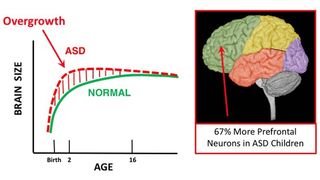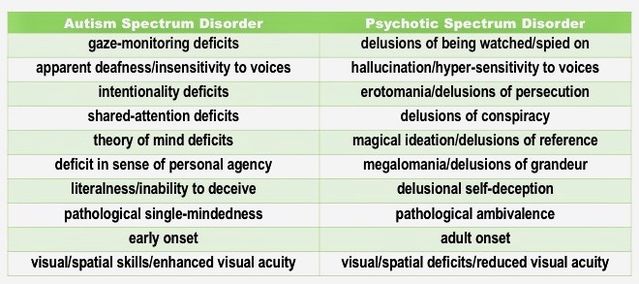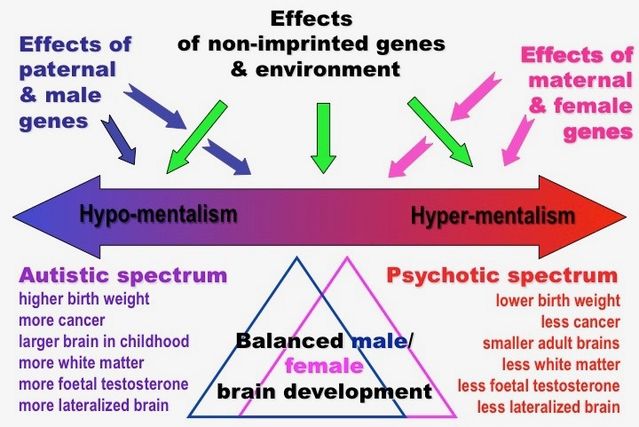Genetics
The Imprinted Brain Theory in a Thousand Words
“Perhaps psychiatry’s grandest working theory since Freud” in a nutshell.
Posted January 13, 2019 Reviewed by Abigail Fagan
Modern science can trace its origin from Copernicus’s discovery of the Sun-centred solar system—which made the prevailing Earth-centred view medieval by comparison. Inevitably, the scientific revolution eventually worked its way to biology with Darwin’s theory of evolution. But the theory lacked a physical foundation until the molecular basis of heredity was discovered by Crick and Watson. This in turn led to a new Copernican revolution in the form of the so-called “selfish gene” view of evolution—the realization that organisms have evolved to copy their DNA, not DNA to copy organisms.
This insight immediately explained why so much DNA was non-functional or parasitic, and it also raised the prospect that in certain respects it might even be dysfunctional. Recessive genes like that for sickle-cell anemia which might confer benefits in single doses but damage in double doses were an obvious example. Another is imprinted genes—those only expressed from one parent’s copy, thereby sacrificing the back-up function which having a second usually confers.
Despite its prime role and control over growth and development, DNA could not legislate in advance for the behavior of motile organisms which may need to go in search of food or mates, avoid predators, and find suitable environments in which to live. Instead, brains evolved in such organisms to act as agents for and on behalf of the organism’s DNA—coding for general epigenetic rules of behavior, such as avoidance of pain and pursuit of pleasure, but otherwise leaving it to the brains concerned to make the right decisions. Those which did would be selected and pass on their DNA; those which didn’t, wouldn’t. Behavioral genetics is as simple as that!
But there was a particular problem in mammals, thanks to the extreme division of labor between parents whereby mothers contributed everything during gestation, birth, and lactation, but fathers only their nuclear DNA. This highly asymmetric situation explains imprinting because a genetic conflict now developed between the mother’s genetic self-interest in economizing on her parental investment in each offspring and the father’s interest in maximizing it thanks to the fact that, whereas the mother’s genes would reliably be present in all of her offspring, the father’s genes need not be present in any save one: Mother’s baby–Father’s? Maybe!

This insight reveals many symptoms of pregnancy, such as gestational hypertension, diabetes, and morning sickness, to be in fact instances of genetic conflict between mother, father, and fetus, with paternal genes driving to produce the largest possible baby, and maternal ones countering to produce something the mother can more easily manage. Here the brain is crucial, because it is the size of the baby’s head that matters in childbirth: Once that is delivered, the rest is easy.
According to the imprinted brain theory, paternal genes make for a baby with a larger brain and tendencies to make more demands on the mother—something which at the extreme is diagnosed as autism. Maternal genes, however, work the opposite way: making for a smaller, more tractable baby—something which at the limit will eventually be diagnosed as psychosis.

I say “eventually diagnosed” because psychosis, in contrast to autism, is a late-onset disorder, usually first showing itself in adolescence, or even much later in life. According to the diametric model of the mind and of mental illness, if autism is as generally agreed hypo-mentalistic (in other words, evidenced by deficits in mentalism/social/interpersonal/theory-of-mind skills), psychosis is characteristically hyper-mentalistic, exhibiting extremes of mentalism in the form of excessive mind-reading (paranoia, erotomania), extreme swings of mood (bipolar disorder), or excessive sense of self (megalomania, delusions of grandeur), etc. If this is so, and given that mentalistic skills take years to acquire and perfect, it follows that hyper-mentalism must normally be a late-onset disorder, just as we find.
An additional implication of the diametric model is that the reduction in mentalism symptomatic of autism can sometimes allow mechanistic cognitive skills to flourish, as in the case of autistic savants. But the symmetry of the model also implies that there could be psychotic savants, with hyper-developed social and political skills which often serve to obscure the underlying psychosis—and usually mitigate it.
According to this view, normality comprises a mind balanced between extremes of hypo- and hyper-mentalism. Everyone has a cognitive configuration situated somewhere on the autistic/psychotic spectrum, but brain modularity suggests that the particular mix may be a complex blend of differences depending on local gene expression in the brain.
Another class of genes which are also subject to highly asymmetric selection and expression in mammals are X chromosome ones thanks to the fact that females have two Xs but males only one. This means that selection will favor female-benefiting X chromosome genes twice as much as male-benefiting ones. But differential X-inactivation/Lyonization and pattern of expression will mean that the individual outcome in any particular female may be complex. Further, males may be affected by epigenetic marks accidentally inherited from their mothers which may modulate expression of their one and only X chromosome independent of the fact that the gene which controls this in females, XIST, is never expressed in males.
The result is that X-chromosome genes resemble imprinted ones in respect to their one-sided pattern of expression, and according to the imprinted brain theory are of the first importance as a result—particularly in view of the size of the X and the fact that it is known to contain so many genes critical to cognition.

Finally, because all fathers are male, male-specific genes are also implicated, explaining why autism has been associated with an extreme male brain.
The New York Times called the imprinted brain theory "perhaps psychiatry’s grandest working theory since Freud and one at the forefront of science." It has now accumulated influential support and a considerable body of hard evidence from epidemiological studies; brain-imaging and surgery; laboratory experiments; cytology/organoids; genomics; and psychological and psychiatric investigations of all kinds. The decisive proof directly linking mental illness to imprinted and X-chromosome gene expression cannot be far off.
References
Badcock, C. (2011). "The imprinted brain: how genes set the balance between autism and psychosis." Epigenomics 3 (3): 345-359.
Badcock, C. R. and B. Crespi (2008). "Battle of the Sexes may set the Brain." Nature 454: 1054-1055.




